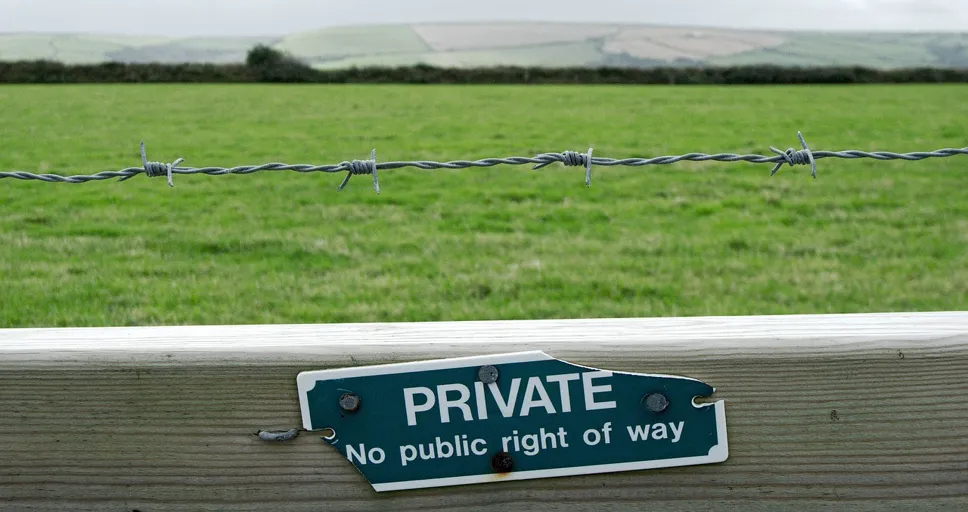Contents
- 1 How To Not Lead Someone On – 3 Signs You Might Be Leading Someone On
- 2 3 Ways to Communicate Your Intentions Clearly
- 3 3 Behaviors to Avoid to Prevent Leading Someone On
- 4 3 Tips on Maintaining Boundaries
- 5 3 Strategies for Handling Awkward Situations
- 6 3 Methods to Stay True to Your Feelings
- 7 3 Steps to Take if You’ve Accidentally Led Someone On
- 8 Frequently Asked Questions
- 8.1 How do I stop being lead on?
- 8.2 How do you know if someone is leading you on?
- 8.3 How do you know if someone is just keeping you around?
- 8.4 Why do I keep being led on?
- 8.5 What to do when someone leads you on?
- 8.6 How do you get over someone leading you on?
- 8.7 How do you tell someone you don’t want to lead them on?
- 8.8 How do I know if I am being lead on?
- 8.9 How do I make sure I’m not leading someone on?
- 8.10 What to do if you accidentally lead someone on?
- 8.11 How do you tell if he’s just keeping you around?
- 9 Conclusion
- 10 Recommended Authors For Further Reading
Understanding how to not lead someone on is an essential part of maintaining healthy and honest relationships. This introduction sets the stage for a series of practical tips designed to help you communicate more transparently and maintain integrity in your interactions. Leading someone on, whether intentionally or unintentionally, can result in confusion, hurt feelings, and damaged trust. Thus, it is crucial to be clear about your intentions from the beginning. The upcoming sections will delve into the signs that you might be leading someone on, effective communication strategies, behaviors to avoid, and tips for maintaining boundaries. Additionally, we’ll explore strategies for handling awkward situations, methods to stay true to your feelings, and steps to take if you’ve accidentally led someone on. Each section is geared towards providing you with actionable advice to ensure that your actions and communications are clear and considerate, aligning with the overarching theme of how to not lead someone on.
- Be clear about your intentions from the start to avoid misleading others.
- Recognize signs you might be leading someone on: inconsistent communication, ambiguous intentions, and physical affection without commitment.
- Communicate clearly by being direct and honest, discussing relationship goals early, and maintaining consistent communication.
- Ensure your actions match your words to prevent confusion and misunderstandings.
- Address and rectify any actions that may have led someone on, fostering transparency and respect in relationships.
How To Not Lead Someone On – 3 Signs You Might Be Leading Someone On
Recognizing the signs that you might be leading someone on is the first crucial step in ensuring that your interactions are honest and clear. Here, we discuss three major indicators that may suggest you are unintentionally misleading someone. This insight aims to help you understand and rectify your actions to maintain transparency and respect in your relationships.
1. Inconsistent Communication
One of the primary signs that you might be leading someone on is inconsistent communication. If you find yourself only reaching out when it’s convenient for you or failing to respond to messages in a timely manner, it can send mixed signals. Regular communication suggests interest and respect, whereas sporadic messages can create confusion and false hope. It’s essential to assess your communication patterns and ensure they align with your true intentions.
2. Ambiguous Intentions
Ambiguity in expressing your feelings and intentions is a significant red flag. If you’re avoiding conversations about the status of your relationship or your feelings towards the other person, you may be inadvertently leading them on. Clear communication is key in any relationship. If you are not interested in advancing the relationship, it’s crucial to convey this openly and kindly. Avoiding such discussions can leave the other person guessing and may lead them to believe there’s more to your interactions than you intend.
3. Physical Affection Without Commitment
Physical affection is often interpreted as a sign of romantic interest. If you’re engaging in physical closeness or intimacy without the intention of developing a deeper relationship, this can be misleading. It’s important to understand that physical actions can speak louder than words. Ensuring that your level of physical interaction is consistent with your feelings and stated intentions is vital in learning how to not lead someone on.
Recognizing these signs in your behavior is the first step towards rectifying any misunderstandings and moving towards more honest and transparent interactions. By being aware of how your actions and communications may be perceived, you can take proactive steps to clarify your intentions and prevent any hurt feelings or misunderstandings.
3 Ways to Communicate Your Intentions Clearly
Communicating your intentions clearly is paramount when it comes to fostering honest and transparent relationships. This not only helps in avoiding misunderstandings but is also crucial in ensuring that you’re not leading someone on unintentionally. Here are three practical ways to express your feelings and expectations clearly to prevent any potential confusion or false hopes.
1. Be Direct and Honest
The cornerstone of clear communication is honesty. Be straightforward about your feelings, intentions, and what you expect from the relationship. Avoid using vague language or beating around the bush, as this can lead to misinterpretations. If you are not interested in pursuing a romantic relationship, express this directly but kindly. Clear communication can prevent misunderstandings and ensure that both parties are on the same page, which is essential in learning how to not lead someone on.
2. Discuss Relationship Goals Early On
One effective way to communicate your intentions is by discussing your relationship goals early on. This involves sharing your perspectives on what you are looking for in a relationship and understanding the other person’s expectations. By having this discussion early, you can avoid any misunderstandings and ensure that both parties have aligned objectives and expectations. This approach not only fosters transparency but also helps in building a foundation of trust and respect.
3. Consistent Communication
Consistency in your communication can significantly impact how your intentions are perceived. Ensure that your actions match your words; if you say you are interested in a friendship, your actions should align with that declaration. Avoid sending mixed signals through inconsistent communication or behavior, as this can lead to confusion and might inadvertently lead someone on. Regular and consistent communication can help reinforce your intentions and ensure that your messages are received as intended.
By implementing these three strategies, you can significantly improve the clarity of your communication, thereby reducing the likelihood of leading someone on. Clear, direct, and consistent communication is key to maintaining honest and transparent relationships, embodying the principles of how to not lead someone on effectively.
3 Behaviors to Avoid to Prevent Leading Someone On

Understanding how to not lead someone on is crucial in fostering honest and respectful relationships. This section highlights three behaviors to avoid if you want to maintain clarity and sincerity in your interactions, thus preventing misunderstandings and hurt feelings.
1. Avoiding Clear Communication About Your Feelings
One of the primary behaviors to avoid is the lack of clear communication about your feelings and intentions. If you’re not interested in a romantic relationship, it’s essential to be honest and straightforward about your feelings. Avoid giving vague compliments or making ambiguous statements that could be interpreted as romantic interest. By being clear about your intentions, you can prevent the other person from developing deeper feelings and avoid leading them on.
2. Not Setting Clear Boundaries
Another critical behavior to avoid is failing to set clear boundaries. This could involve physical boundaries, such as avoiding unnecessary physical contact, or emotional boundaries, like not sharing deeply personal information that could be misconstrued as emotional intimacy. Setting and respecting boundaries is a key aspect of how to not lead someone on. It helps establish a clear line between friendship and something more, ensuring that both parties are on the same page.
3. Giving Mixed Signals
Finally, avoid giving mixed signals. This can include acting flirtatiously, making plans for the future, or showing a level of interest that doesn’t match your true feelings. Mixed signals can be incredibly confusing and can lead the other person to believe there is a chance for a romantic relationship when there is not. Consistency in your actions and words is essential to communicate your intentions clearly and prevent any misunderstandings.
By avoiding these behaviors, you can foster more honest and straightforward interactions, ensuring that you’re not leading someone on unintentionally. Remember, clear communication and respect for the other person’s feelings are the foundations of any healthy interaction.
3 Tips on Maintaining Boundaries
Maintaining clear boundaries is essential in knowing how to not lead someone on. It’s about respecting both your limits and those of others, ensuring that relationships develop healthily and transparently. Here are three practical tips to help you maintain boundaries effectively, preventing misunderstandings and ensuring that everyone’s expectations align.
1. Communicate Your Limits Clearly
The first step in maintaining boundaries is to be clear about what they are. If you’re not interested in a romantic relationship, make this clear from the beginning. Likewise, define what types of behavior you find acceptable and what you don’t. This could include setting limits on physical contact, the frequency and type of communication, or the level of personal information shared. Remember, it’s okay to be direct about your boundaries; clear communication is vital in ensuring they are respected.
2. Stick to Your Decisions
Once you’ve set your boundaries, it’s crucial to adhere to them. Consistency sends a clear message about what you expect from the relationship. If you’re inconsistent, you might send mixed signals, which can lead to confusion and potentially lead someone on. If you find yourself in a situation where your boundaries are being tested, remind yourself and the other person of your limits. It’s okay to reinforce your boundaries if they are not being respected.
3. Be Mindful of Your Behavior
Your behavior plays a significant role in maintaining boundaries. Be mindful of how your actions can be interpreted by others. For example, if you’re trying to maintain a platonic relationship, avoid behaviors typically associated with romantic interest, such as flirting or excessive complimenting. Similarly, think about the settings in which you spend time together and choose public, neutral places if necessary to avoid sending the wrong message. Being conscious of your behavior and how it aligns with your stated boundaries is crucial in ensuring clear communication and respecting both parties’ feelings.
By following these tips, you can maintain healthy boundaries that respect both your feelings and those of others. Effective boundary setting and maintenance are key components of how to not lead someone on and can lead to more honest, respectful, and fulfilling relationships.
3 Strategies for Handling Awkward Situations

Navigating awkward situations without leading someone on requires tact, honesty, and clear communication. In this section, we explore three strategies to help you manage these challenging scenarios with grace, ensuring that you maintain your integrity and respect the feelings of others.
1. Be Direct but Kind
When faced with an awkward situation, the best approach is often to be direct. If someone misinterprets your friendliness for romantic interest, clarify your intentions kindly but firmly. Use “I” statements to express your feelings without assigning blame. For example, you could say, “I value our friendship and I want to be clear that my feelings are purely platonic.” This direct approach can prevent further misunderstandings and is a crucial part of learning how to not lead someone on.
2. Change the Subject Gracefully
If the conversation veers into uncomfortable territory, such as when someone expresses feelings you don’t reciprocate, it’s important to handle the situation gracefully. Acknowledge what the other person has said, so they feel heard, then gently steer the conversation in a new direction. This can help diffuse tension without dismissing the other person’s feelings outright. For instance, after acknowledging their feelings, you might say, “I really appreciate your honesty. Let’s focus on our project right now.” This helps maintain a professional or friendly atmosphere without escalating the awkwardness.
3. Set Clear Boundaries Going Forward
If an awkward situation arises from a misunderstanding or crossed boundaries, use it as an opportunity to set clear boundaries going forward. Explain what behavior made you uncomfortable and outline what you would prefer instead. Be specific and assertive in your communication to avoid ambiguity. For example, “I noticed you’ve been messaging me late at night. I prefer not to receive messages after 9 PM as it disrupts my personal time.” Establishing clear boundaries is an effective strategy in maintaining both your comfort and the clarity of your relationship dynamics.
Handling awkward situations with clarity and kindness is vital in ensuring that you do not lead someone on unintentionally. By being direct, changing the subject gracefully, and setting clear boundaries, you can navigate these challenging moments while preserving the integrity of your relationships.
3 Methods to Stay True to Your Feelings
Staying true to your feelings is crucial in navigating personal interactions and understanding how to not lead someone on. It involves being honest with yourself and others about your emotions and intentions. Here are three methods that can help you remain authentic to your feelings, thereby ensuring that your actions are clear and respectful to those around you.
1. Regular Self-Reflection
Regular self-reflection is essential for understanding your true feelings. Take time to evaluate your emotions and thoughts about your relationships and interactions. Ask yourself what you really want and feel in different situations. Are you acting out of guilt, pressure, or genuine interest? Self-reflection helps you understand your motivations, making it easier to stay true to yourself and avoid sending mixed signals to others. Journaling, meditation, or even discussing your thoughts with a trusted friend can facilitate this introspective process.
2. Open and Honest Communication
Honest communication is key in being transparent with your feelings. If you’re clear about your emotions and intentions, there’s less room for misunderstanding. When communicating with someone, be direct yet empathetic. Let them know your feelings and boundaries while being considerate of theirs. Remember, it’s okay to express that you’re not interested in someone romantically or that you’re unsure about your feelings. Open communication is not just about speaking your truth; it’s also about listening and respecting the other person’s perspective.
3. Consistent Behavior
Ensure that your behavior aligns with your stated feelings and intentions. Inconsistencies between what you say and what you do can lead to confusion and can inadvertently lead someone on. For example, if you’ve expressed that you’re not interested in a romantic relationship, then it’s important to avoid actions that could be interpreted as flirtatious or intimate. Consistency in your actions and words reinforces your sincerity, helping to maintain clear and honest relationships.
By employing these methods, you can better ensure that you stay true to your feelings and avoid leading someone on. It’s about creating a balance between being respectful to others’ emotions and honoring your own. Remember, understanding how to not lead someone on isn’t just about avoiding hurt feelings; it’s also about fostering healthy, straightforward, and respectful interactions with those around you.
3 Steps to Take if You’ve Accidentally Led Someone On

Even with the best intentions, there might be times when you accidentally lead someone on. Recognizing this situation and addressing it respectfully and empathetically is crucial in how to not lead someone on further and rectifying the misunderstanding. Here are three steps you can take if you find yourself in this situation.
1. Acknowledge the Situation
The first step is to acknowledge the situation both to yourself and to the other person. Realize that your actions or words may have unintentionally led someone to believe there was more to your relationship than intended. This can be a difficult realization, but acknowledging it is crucial for resolving the situation. Once you’ve acknowledged it internally, prepare to communicate this to the other person. Honesty is key here; it sets the foundation for a respectful and clear conversation.
2. Communicate Clearly and Compassionately
Once you’ve acknowledged the situation, the next step is to communicate with the person you may have led on. This conversation should be approached with care, honesty, and empathy. Explain your feelings and intentions as clearly as possible, ensuring you’re not leaving room for further misunderstandings. Apologize for any hurt feelings or confusion caused by your actions. It’s important to be gentle but direct during this conversation to ensure that your message is understood but not hurtful.
3. Set Clear Boundaries Going Forward
After the conversation, it’s important to set clear boundaries to prevent any future misunderstandings. This might involve changing your behavior to be more in line with your stated intentions or adjusting the nature of your interactions with the person. Be clear about what your relationship can and cannot be moving forward. Setting these boundaries will help both parties understand the situation better and move forward in a way that’s respectful to everyone’s feelings.
Remember, learning how to not lead someone on is a process that involves honest self-reflection, clear communication, and setting appropriate boundaries. If you’ve accidentally led someone on, taking these steps can help correct the course and mitigate any hurt feelings, leading to healthier and more transparent interactions in the future.
- Be aware of leading someone on through inconsistent communication, ambiguous intentions, and physical affection without commitment.
- Recognize and rectify behaviors that may mislead others to maintain transparency and respect in relationships.
- Communicate clearly by being honest, discussing relationship goals early, and ensuring consistent communication.
- Prevent misunderstandings and hurt feelings by aligning your actions with your stated intentions and relationship goals.
Frequently Asked Questions
How do I stop being lead on?
Set clear boundaries, communicate your expectations, and be attentive to actions that don’t align with words. Don’t hesitate to walk away if necessary.
How do you know if someone is leading you on?
If someone is inconsistent, avoids defining the relationship, and doesn’t prioritize your time or feelings, they may be leading you on.
How do you know if someone is just keeping you around?
You might feel like a backup option if they only reach out sporadically, show no interest in your life, or avoid making future plans with you.
Why do I keep being led on?
This could be due to ignoring red flags, misinterpreting intentions, or consistently choosing partners who are not looking for the same type of relationship.
What to do when someone leads you on?
Confront the person about your feelings and the situation. If there’s no change, it might be time to move on and focus on your own well-being.
How do you get over someone leading you on?
Accept the situation, cut off contact to heal, engage in self-care activities, and surround yourself with supportive friends and family.
How do you tell someone you don’t want to lead them on?
Be honest and direct about your feelings and intentions without being hurtful. Clear communication is key to avoiding misunderstandings.
How do I know if I am being lead on?
Look for signs such as lack of commitment, inconsistent behavior, and lack of transparency about their feelings or the status of your relationship.
How do I make sure I’m not leading someone on?
Be clear and honest about your intentions from the beginning, maintain open communication, and ensure your actions match your words.
What to do if you accidentally lead someone on?
Apologize sincerely, clarify your feelings and intentions, and give them space to process and respond.
How do you tell if he’s just keeping you around?
If he only contacts you sporadically, doesn’t introduce you to friends or family, and avoids discussing the future, he may just be keeping you around.
Conclusion

Understanding how to not lead someone on is an integral part of fostering healthy and respectful relationships. Throughout this guide, we’ve explored various strategies, from recognizing signs that you might be leading someone on to communicating your intentions clearly and maintaining appropriate boundaries. By implementing these practices, you can ensure that your interactions remain transparent, considerate, and above all, truthful.
Remember, the foundation of any strong relationship is clear and honest communication. It’s crucial to be mindful of your actions and their potential implications on others’ feelings. By staying true to your feelings, respecting others’ emotions, and setting clear boundaries, you can avoid misunderstandings and unintentional hurt.
In conclusion, being cautious not to lead someone on is not just about avoiding certain behaviors; it’s about promoting kindness, respect, and integrity in your personal connections. By following the tips outlined in this article, you can contribute to healthier, more meaningful relationships while ensuring that everyone involved feels valued and understood.
Recommended Authors For Further Reading
- John Gray – Gray is most famous for his work “Men Are from Mars, Women Are from Venus,” which explores the intricacies of relationships and communication between genders, relevant to understanding and avoiding misleading behavior.
- Esther Perel – Perel is a renowned therapist and author, focusing on human relationships, intimacy, and how we can maintain honesty and clarity in our interactions, key to not leading someone on.
- Brené Brown – Brown’s research on vulnerability, shame, and empathy provides deep insights into honest communication and forming authentic connections, essential for clear and straightforward interactions.
- Matthew Hussey – As a relationship coach, Hussey provides practical advice on dating and building healthy relationships, which includes how to communicate intentions clearly to avoid misleading others.
- Harville Hendrix – Hendrix, known for his work on intimate relationships and communication, offers valuable perspectives on maintaining honesty and understanding in partnerships, helping to prevent leading someone on inadvertently.


